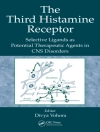It should not come as too much of a surprise that biological membranes are considerably more complex than lipid bilayers. This has been made quite clear by the fluid-mosaic model which considers the cell membrane as a two-dimensional solution of a mosaic of integral membrane proteins and glycoproteins firmly embedded in a fluid lipid bilayer matrix. Such a model has several virtues, chief among which is that it allows membrane components to diffuse in the plane of the membrane and orient asymmetrically across the membrane. The model is also remarkable since it provokes the right sort of questions. Two such examples are: Does membrane fluidity influence enzyme activity? Does cholesterol regulate fluidity? However, it does not go far enough. As it turns out, there is now another version of this model, the so-called post-fluid mosaic model which incorporates two concepts, namely the existence in the membrane of discrete domains in which specific lipid-lipid, lipid-protein and protein-protein interactions occur and ordered regions that are in motion but remain separate from less ordered regions. We must admit that both are intriguing problems and of importance in guiding our thinking as to what the next model might be.We have chosen not to include the subject of membrane transport in the present volume. This obviously represents a break with convention. However, the intention is to have the topic covered subsequent volumes relating to organ systems. It would be right to regard this as an attempt to strengthen the integrated approach to the teaching of medicine.
Edward Bittar
Membranes and Cell Signaling [PDF ebook]
Membranes and Cell Signaling [PDF ebook]
购买此电子书可免费获赠一本!
语言 英语 ● 格式 PDF ● ISBN 9780080536118 ● 编辑 Edward Bittar ● 出版者 Elsevier Science ● 发布时间 1997 ● 下载 6 时 ● 货币 EUR ● ID 2261704 ● 复制保护 Adobe DRM
需要具备DRM功能的电子书阅读器












